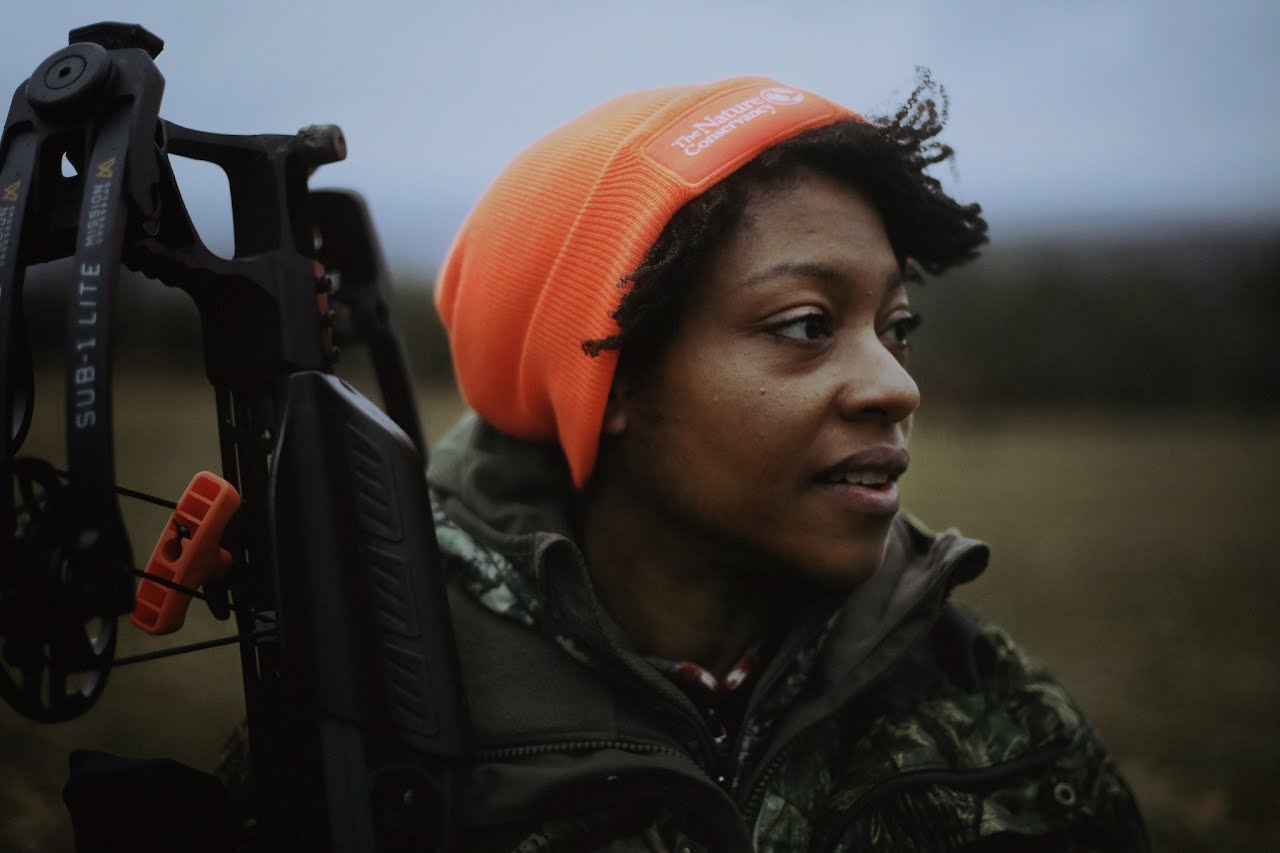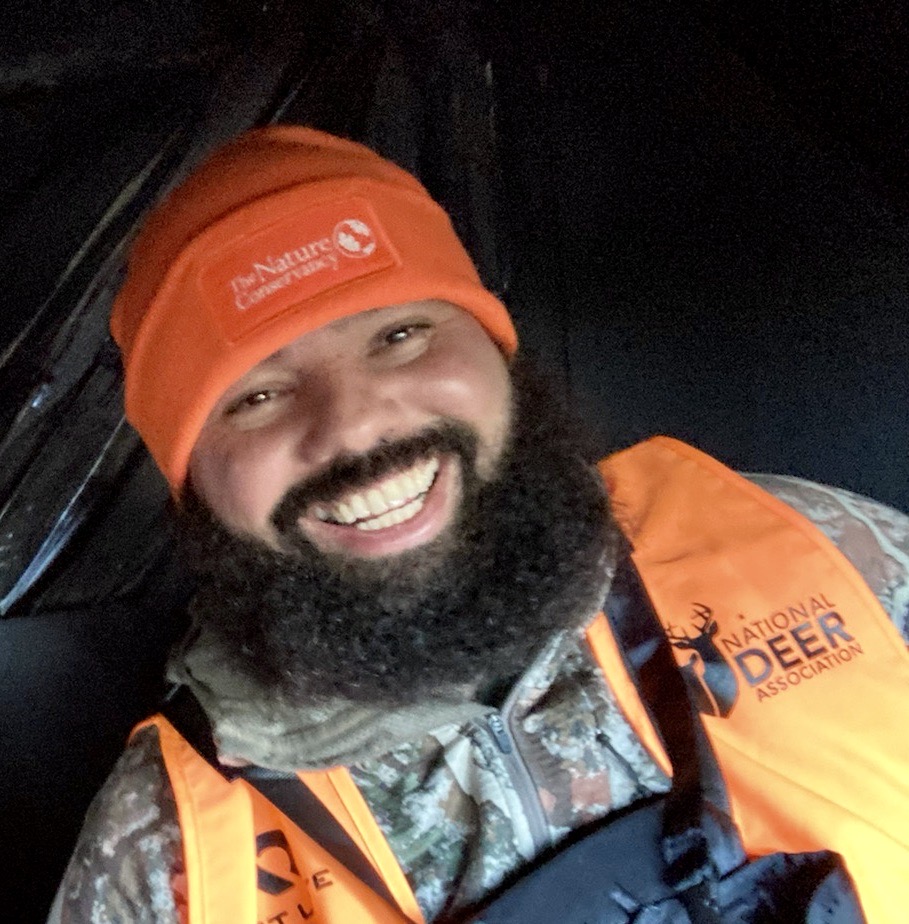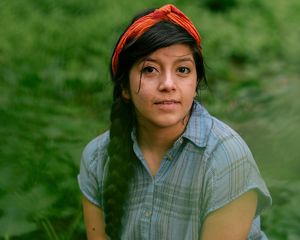Where Are All the Hunters of Color?
The executive director of Hunters of Color discusses a recent hunting mentorship program and how to make the outdoors more equitable.
The Nature Conservancy is a local to global organization, proudly partnering with groups and stakeholders from around the world that reflect a wide range of viewpoints and perspectives. This program is not funded or implemented by TNC.
Lydia Parker, executive director of Hunters of Color, and Paul Gallery, stewardship coordinator for The Nature Conservancy in New York, met up to share experiences from a three-day hunting mentorship event at Hannacroix Ravine preserve. The program, which was run in collaboration with National Deer Association and Backcountry Hunters and Anglers, teaches people to hunt, harvest, and prepare white-tailed deer. In sharing this story, we hope to highlight Hunters of Color’s work to increase BIPOC participation in hunting for the sake of conservation, food sovereignty, and to preserve ancestral traditions.
Listen to their full conversation via the recorded audio below.

In Pursuit of a More Equitable Outdoors
Hunters of Color's Lydia Parker and The Nature Conservancy's Paul Gallery in conversation.
Read below
Paul: This event was hunting-based and so is your organization, and there are a lot of different ways in which people view hunting. Can you talk a little about what hunting means to you and how you got into hunting?
Lydia: The event took place in the Mohawk Valley, and that whole region is Mohawk land and ancestral land of my tribe, the Haudenosaunee, or Iroquois. Our creation story tells us that hunting dates back to when Sky Woman fell from the sky. For me, hunting is a relationship with the land and a connection to nature that is really beautiful and sacred. It’s an agreement that we have with the natural world that we take care of nature, and she’ll take care of us.
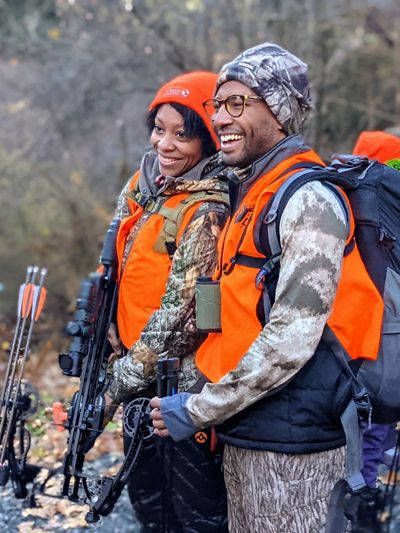
Hunters appreciate so much more than just seeing things in nature. We actually take part in nature and play a role in the ecology. So, to me, hunting is vital and important to culture and to sustainability. If you choose to eat meat, it is the most sustainable way to do so. And as you know in New York with all the deer you have out there, to be able to play a role in that ecology is important, too.
Sharing Traditions
Paul: The event at Hannacroix was really something special. What moments stood out to you from that experience?
Lydia: One highlight was being able to share the Ohén:ton Karihwatéhkwen, which is the traditional Haudenosaunee opening address of gratitude. It felt very appropriate to come together and give these greetings, the “words that come before all else,” to the natural world. We give thanks to the animals. We see the animals. We recognize the animals. Being able to do that the same way that my ancestors have done for thousands of years in that same part of the world—I think really does set the tone and shows that we’re here as part of nature. We’re not here to dominate or just to kill things. And a lot of that is what we’re trying to break down—those narratives.
Being able to share that around the fire the first night, with you and your partner Libby making pizza—it was just such a beautiful entry into the weekend. It showed a reverence for the land and for what our goals were: to connect to the land and be connected to nature, and also to each other.
Paul: The address for me, too, was tone setting for the entire weekend; I was humbled that you would share that with us. You mentioned the making of dinners, and I also have this memory of Jimmy handing me a bag of corn flour and saying, “Okay, you’re going to make arepas. I know you don't know how, but like, here we go.” All the conversations and smiles that came out of sharing in that food and culture together—that was such a takeaway for me of the importance of the work and of sharing these experiences.

Lydia: I think that being able to be in community with such diverse people, being able to share traditions from all of our backgrounds—that’s part of why it’s so important for Hunters of Color to exist. As long as there is anything that’s monochrome, monoracial, or lacking in diversity, we’re lacking in that flavor and in that culture. We’re lacking in diversity of thought and problem-solving skills.
Breaking Down Barriers to Access
Paul: Can you talk about some of the barriers people of color face in hunting?
Lydia: One of the biggest barriers—and there’s a whole list of them on our website, at huntersofcolor.org—is land access. Ninety-eight percent of all privately owned land in the United States is owned by white Americans, according to the USDA. And so that was an instant no-brainer.
One of the saddest things to hear is, “No, we don't do that; hunting is not for us, hunting is not for me.” That's sad because it's clearly a myth. It's not true.
In order to have hope for the future, you need to see the history: how we got to this place where 97% of hunters are white. First and foremost, we have the removal of Indigenous Peoples from our land. Then we have redlining, where the USDA actually had laws to where people of color, especially Black people, could not move into certain neighborhoods. That racism and that redlining went into building our communities. That didn't happen on accident. And that nice property that had the access to the hunting lands wasn't set aside for people of color. It was set aside for the people the USDA thought would make the neighborhoods appreciate more.
That’s why when we got the phone call about The Nature Conservancy being willing to open up this land for our programming it was like a light turned on. It was like, “Ah, here we go.” Here’s an opportunity to really make a difference and make an impact in a place where inequity has happened, where, as I said, it’s all Indigenous land. And between that and redlining and Indigenous People being pushed off our ancestral lands, the fact that The Nature Conservancy has that power to say, “Here, come hunt. Come run this programming on Mohawk land”—that was really powerful.
Another barrier to entry is safety. We talk about things like feeling comfortable around firearms or feeling comfortable going into a predominantly white space. Hunting is currently 97% white and 89% male. And as women of color there’s an added level of safety concerns and concerns about accessing spaces where you don’t know if people are going to be accepting, or kind, or anti-racist. You don’t know if you’re going to be safe when you get there. You might not have cell service. So, things like that that are actual fears and barriers to entry for BIPOC communities.
Indigenous Stewardship, Hunting and Conservation
Paul: Part of taking care of land is stewardship—or conservation, as we’re calling it nowadays—and that’s something that the Indigenous Peoples of the Americas have been doing for time immemorial. How does that legacy of stewardship influence Hunters of Color’s mission?
Lydia: Hunting in the U.S. alone contributes $1.6 billion a year to conservation causes. That's how most states get the majority of funding for their Departments of Natural Resources, or Departments of Fish and Wildlife. That's important for us to highlight especially as our nation becomes more and more diverse and less and less people hunt. By the year 2044, the U.S. Census says that the U.S. will be majority BIPOC, majority people of color. If we're going to continue to seek conservation dollars through things like hunting and fishing, we need to make sure that people of color have access to those things in an equitable fashion.
So that's first and foremost, but then also conservation as an idea, even the North American model of wildlife conservation, was built around the same group of people with the same mentality from a very Western standpoint. Whereas, in Indigenous relationship with the land, we don't say 'conservation' necessarily; it's a relationship with the land. And we believe at Hunters of Color that conservation as we call it today is actually just Indigenous knowledge. It's the way that we've interacted with the planet, the agreements that we've had with the planet, with our mother the Earth, and with the animals and the plants. We believe that through reinstating those truths about who we are as Onkwehonwe, who we are as people in relationship with the land, is how we get back to a healthy planet.
So for us at Hunters of Color, conservation is the idea of racial healing because it relies on and requires us to not only center Indigenous thought and practice but to share power and privilege with Indigenous people leading conservation efforts.

Lydia: Paul, I’ve been meaning to ask you because it is important. Why do you care? Why did you invite Hunters of Color out?
Paul: I think it came from wanting to understand how to be a better ally and figure out what allyship truly is and how to engage in it. I’m not someone who wants to stand by and just talk about something—I want to do something. To see those injustices and do nothing wasn’t an option. This seemed like an opportunity.
Lydia: Thank you, Paul, for recognizing that need and recognizing that issue and taking action. I’m also grateful for the mentees and their bravery to come out, and I’m grateful to be part of something like Hunters of Color, where we’re intentional about making anti-racist spaces for people to access the outdoors. I’m hopeful we will continue to do that with The Nature Conservancy.
Reflections
Scroll down to hear firsthand from participants of this three-day hunting mentorship program.
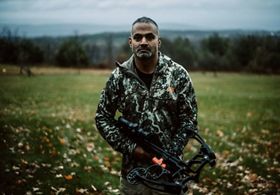
Chris Fernando
Fernando reflected on the mentorship aspects of the weekend and the learning opportunities Hunters of Color provided. Listen in.
I’m really grateful to The Nature Conservancy and the Hunters of Color organization for working with other organizations to afford this opportunity for us to participate and learn about hunting in a safe and supportive environment. It was so key to have the mentors, the mentorship that we received, to kind of learn about hunting both [in] a technical way, obviously learning about safety, but also getting connected to the spiritual aspects to it and the ancestral aspects to it. I felt like the understanding that you’re harvesting an animal and honoring the life of an animal is really something that was emphasized and something that was really important to me if this was going to be a more sustainable activity for the future. Just really grateful and I really hope others get the opportunity to experience what we did that weekend. Thank you, so much.
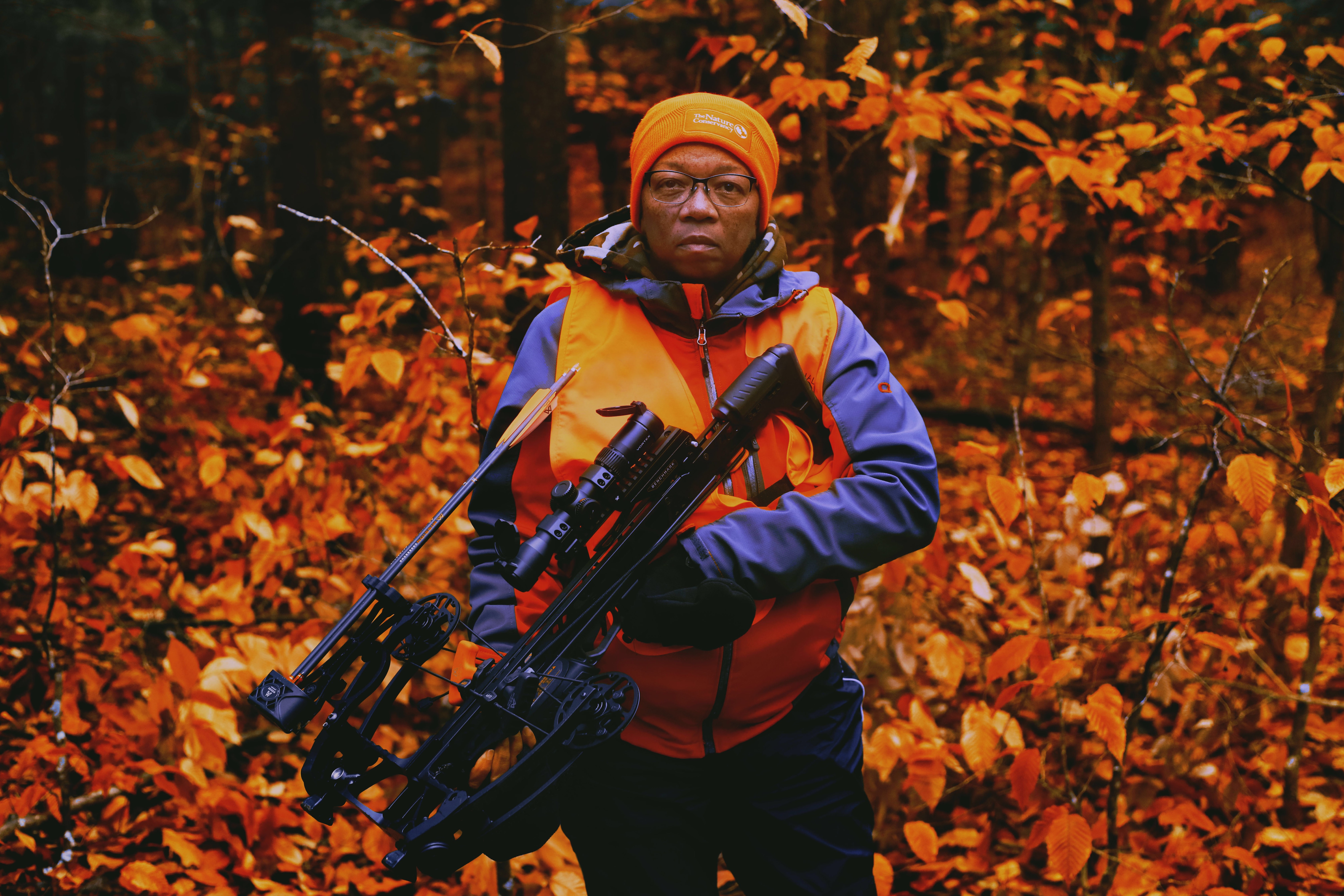
Benita Law-Diao
“This was a well-planned, professional experience that helped me feel capable, safe and confident throughout the entire experience. I will remember the kindness, professionalism, and sincere commitment of the mentors to share their skills with us. The only thing that could have been better was that it did not rain every day, but that made the experience memorable also. Trudging through rain and mud, and then sitting in the blind looking in every direction for a deer to be in the perfect position for me to test my aiming skills was exciting. While in the blind, all we could hear was the nearby stream, an occasional bird, and an occasional car in the distance. It was so calm and quiet that I imagine the reason why we never saw a deer was he could probably hear our hearts beating (ha, ha!). HOC made this experience life-changing for me for more reasons than I know how to clearly convey.”
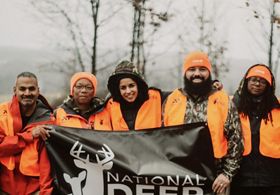
Divya Anantharaman
Anantharaman, pictured center, expressed how incredible it felt to connect with other people of color. Listen in.
The Hunters of Color weekend was just beyond my expectations. It felt so incredible to connect to other people of color and have that unspoken understanding and appreciation of just being around people who get it. I really, really loved and appreciated the conservation-driven focus and it felt a lot deeper than the more Eurocentric and colonized sort of ideas of managing nature. It felt very culturally sensitive, and it felt like there was room for all of our cultures to be in there, too. I also appreciated the perspective of being part of nature and being part of something larger and playing a stewardship role. It felt so, so much more balanced. There was also a sense of ease and trust, and I realized how much of that had been missing in my life. I am forever grateful for how generous and knowledgeable Hunters of Color was. And I’m so impressed and so happy to now have a community of nature-loving friends, and I feel like it’s just going to be this lifelong community. The only thing I really would’ve changed was adding one more day because I just didn’t want to leave! It was definitely a lot more tiring but not in a bad way, it was just like a lot of adrenaline and energy and it was so much fun and I cannot wait to meet with everyone again.
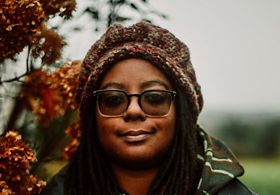
Zsakee Lewis
Lewis noted that it was a life-giving weekend, bringing joy and opportunities to commune with nature. Listen in.
Participating in the Hunters of Color weekend was a life-changing and life-giving experience. It continues to bring me joy and provide me with opportunities to commune with nature that I wouldn’t have had access to before. They introduced me to experts in their field and people and mentors who are truly passionate about hunting and sharing what they know and what they’ve learned with new hunters. And I have to thank both Lydia and Jimmy for sharing their culture, their expertise, and their hearts with us.

